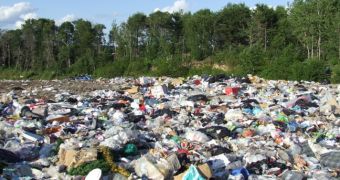Chevrolet has launched a program aiming to support landfills exploiting garbage and turning it into valuable energy. Its Carbon Initiative backs the Rockingham County (Virginia) Landfill operations that capture methane and destroy it, or use it to provide affordable power.
Garbage decomposes in landfills, emitting a gas that is half methane. Instead of letting it reach the atmosphere, Rockingham County (Virginia) Landfill relies on a pipe network to collect and distribute the gas to the Memorial Hospital (RMH), the Environmental News Network informs.
The hospital depends on diverted gas to power its electric boilers, in order to produce Steam, heat and electricity for its own use. RMH is one of the first institutions that has experienced the benefits of this ingenious system.
Operations developed to turn this element into a valuable asset are welcomed, mostly because they provide a win-win situation.
Destroying these otherwise toxic gases takes care of the unpleasant odor and helps fight climate change acceleration while increasing air quality.
Chevrolet has recently announced a very ambitious goal. It plans to support landfill projects aiming to stop 8 million metric tons of carbon dioxide from reaching the atmosphere.
Its series of carbon-reducing programs will be developed in the US, following three different targets: a boost for the renewable sector, energy-efficiency targets and forestry preservation.
It seems that representatives from Chevrolet are very confident and hope to witness effective changes in less than five years.
Their contribution is much-needed, since experts say that only Americans generate over 200 million tons of trash on an annual basis.
Under these circumstances, landfill gas projects are a smart, cost-effective way of turning waste into a valuable source of energy.
Moreover, it seems that experts have established that harmful landfill gases are up to 21 times more powerful than carbon dioxide, when it comes to its role in accelerating climate change.

 14 DAY TRIAL //
14 DAY TRIAL //